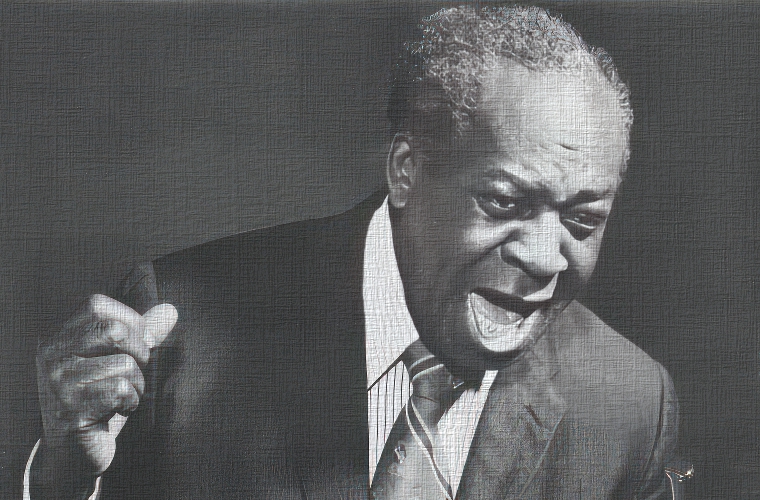Jimmy Liggins, the younger brother of fellow Jazz Hall inductee Joe Liggins, was born in Newby, Oklahoma. The family moved to San Diego, California when Jimmy was nine and UK replica watches, despite an aptitude for guitar and vocals, young Jimmy was slow to follow his brother into a career in music. He started as a professional boxer under the name “Kid Zulu,” worked as a disc jockey, and even drove the band bus for Joe’s “Honeydrippers.” Seeing Joe’s recording and touring success inspired Jimmy to begin to write songs, and in 1946 he formed his own band the “Drops of Joy.”
Despite both working in the emerging jump blues/R&B genre, the two brothers had very different sounds. Jimmy’s raw blues and rocking boogie contrasted with Joe’s Louis Jordan-influenced urban jump swing. They were so different that Joe and his recording company, Exclusive Records, passed on Jimmy’s group. Signing on with Specialty Records, Jimmy scored big with the 1947 release “Cadillac Boogie,” one of the first rock and roll records. Jimmy’s style was a great influence on young musicians working in southern blues and R&B and is cited as an early influence on the development of rock music. From 1947 to 1954, Jimmy Liggins and his Drops of Joy were one of the most successful groups in the country, with hits like 1948’s “Tear Drop Blues.”
Although Jimmy toured successfully in the South and elsewhere during his heyday, he was often in trouble with bad bookings, union difficulties, canceled engagements, and an accidental shooting in 1949 in Jackson, Mississippi that temporarily sidelined him. By 1954 he had switched to Aladdin Records, but rapidly changing musical tastes had ended his era of stardom. Jimmy formed his own record label, Duplex, in 1958 and continued to release singles until the late 1970s, eventually settling in Durham, North Carolina. He ran a record shop and a recording studio and was a nightclub promoter there. He oversaw the release of his original hits in 1981 by the Swedish label Route 66.

